Key Takeaways
-
Physical Differences: Carpenter bees have smooth, shiny black abdomens, while bumble bees are fuzzy and brightly striped in yellow and black.
-
Behavioral Traits: Carpenter bees are solitary and drill into wood; bumble bees live in colonies and are beneficial pollinators.
-
Nesting Habits: Carpenter bees tunnel into untreated wood, leaving holes and sawdust. Bumble bees prefer underground burrows or grassy spots.
-
Aggression and Stings: Male carpenter bees may hover but rarely sting; bumble bees sting only when provoked and are generally docile.
-
Property Impact: Carpenter bees can damage wood structures over time, while bumble bees pose no structural threat and aid pollination.
-
Identification Methods: Look for smooth vs. fuzzy appearance, behavior (wood boring vs. flower visiting), and nest location (wood vs. ground).
-
Prevention & Management: Treat and seal wood to prevent carpenter bee damage; relocate bumble bee nests professionally if needed.
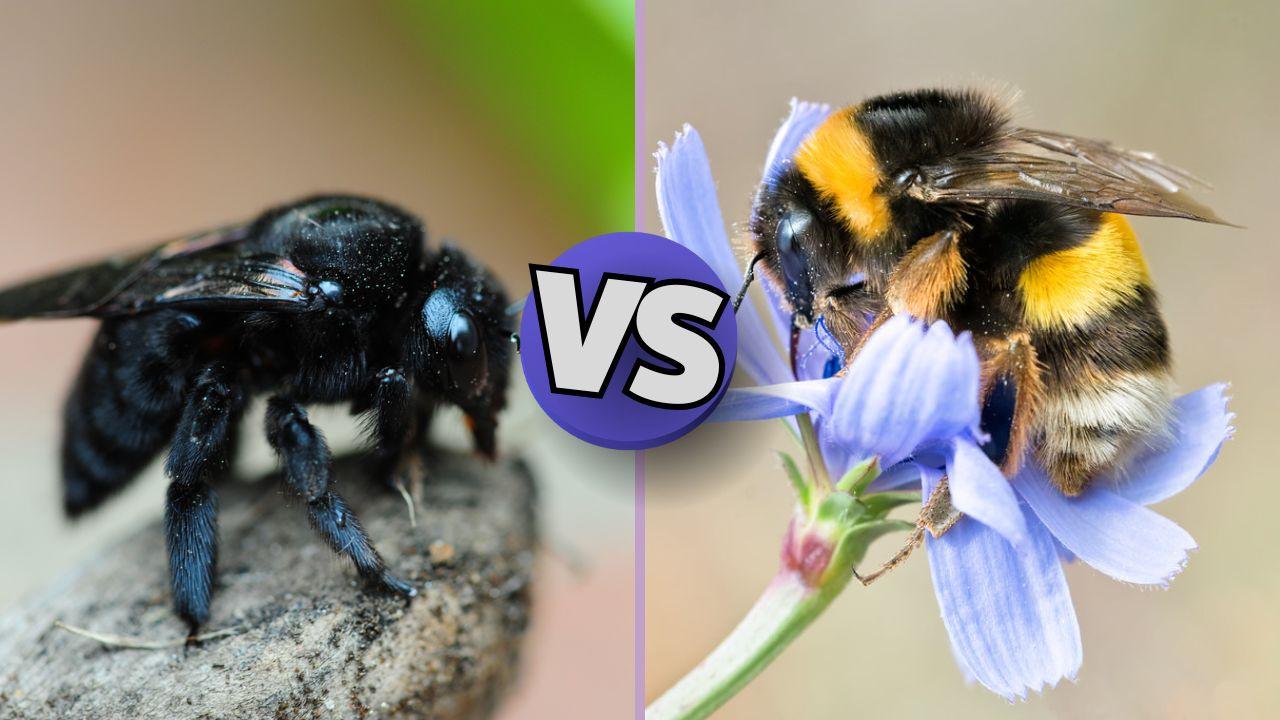 Carpenter bees and bumble bees are often confused due to their similar appearances, but they are quite different in their behaviour, nesting habits, and physical traits. Knowing these differences can help you identify which bee you’re dealing with and whether it threatens your home or is a helpful pollinator. Let’s explore the key differences between carpenter bees vs bumble bees and how to handle encounters with each.
Carpenter bees and bumble bees are often confused due to their similar appearances, but they are quite different in their behaviour, nesting habits, and physical traits. Knowing these differences can help you identify which bee you’re dealing with and whether it threatens your home or is a helpful pollinator. Let’s explore the key differences between carpenter bees vs bumble bees and how to handle encounters with each.
Physical Differences: Carpenter Bee vs Bumble Bee
The most noticeable difference between carpenter bees and bumble bees lies in their appearance.Key Characteristics of Carpenter Bees
-
 Body: Have smooth, shiny black abdomens with little to no hair.
Body: Have smooth, shiny black abdomens with little to no hair. -
 Color: Typically black in color but may have some yellow markings near their thorax.
Color: Typically black in color but may have some yellow markings near their thorax. -
 Size: Larger in size, ranging from 0.6 to 1 inch.
Size: Larger in size, ranging from 0.6 to 1 inch. -
 Appearance: Often mistaken for large flies due to their glossy appearance.
Appearance: Often mistaken for large flies due to their glossy appearance.
Key Characteristics of Bumble Bees
-
 Body: Have fuzzy, hairy bodies with black and bright yellow stripes.
Body: Have fuzzy, hairy bodies with black and bright yellow stripes. -
 Size: Smaller than carpenter bees, ranging from 0.4 to 0.9 inches.
Size: Smaller than carpenter bees, ranging from 0.4 to 0.9 inches. -
 Appearance: Appear rounder and bulkier due to their thick hair.
Appearance: Appear rounder and bulkier due to their thick hair.
Behavioral Differences: Bumblebee vs Carpenter Bee
Carpenter bees and bumble bees have distinct behaviours that set them apart.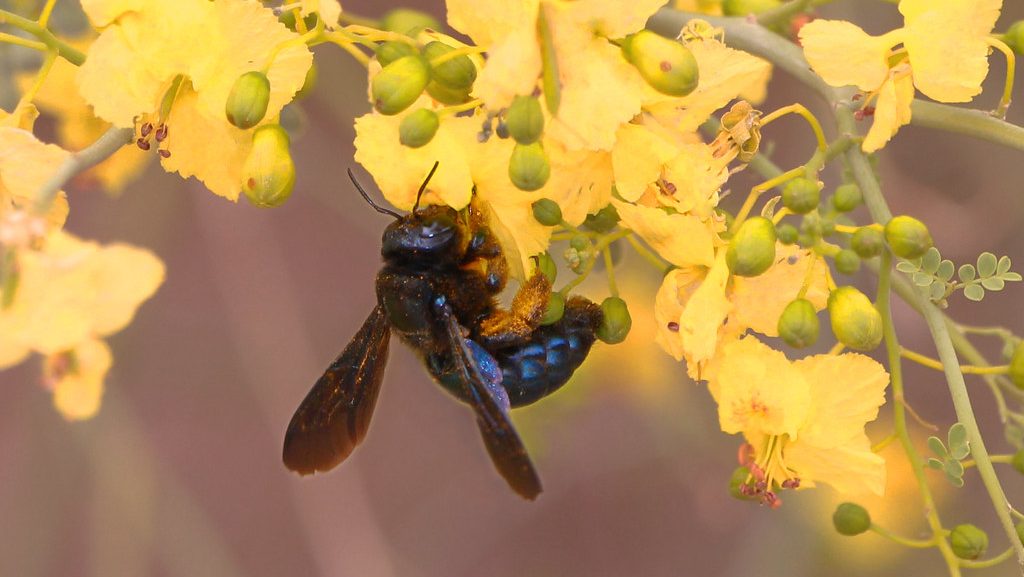

Not getting a solution?
Get your free pest control estimate today!- Solitary insects that do not form colonies.
- They are known for boring holes into untreated wood to build their nests, which can cause structural damage.
- Often seen hovering near wooden structures like decks, fences, or eaves.
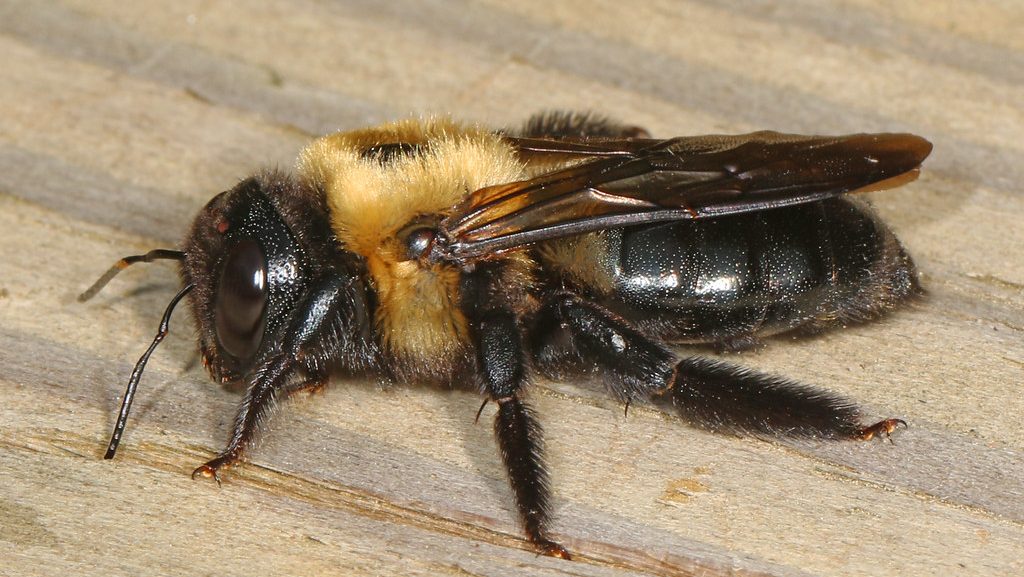 Bumble Bees Behavior
Bumble Bees Behavior
- Social insects that live in colonies with queen and worker bees.
- Nest in the ground, often using abandoned rodent burrows or grassy areas.
- Play a critical role in pollination, buzzing around flowers to collect nectar and pollen.
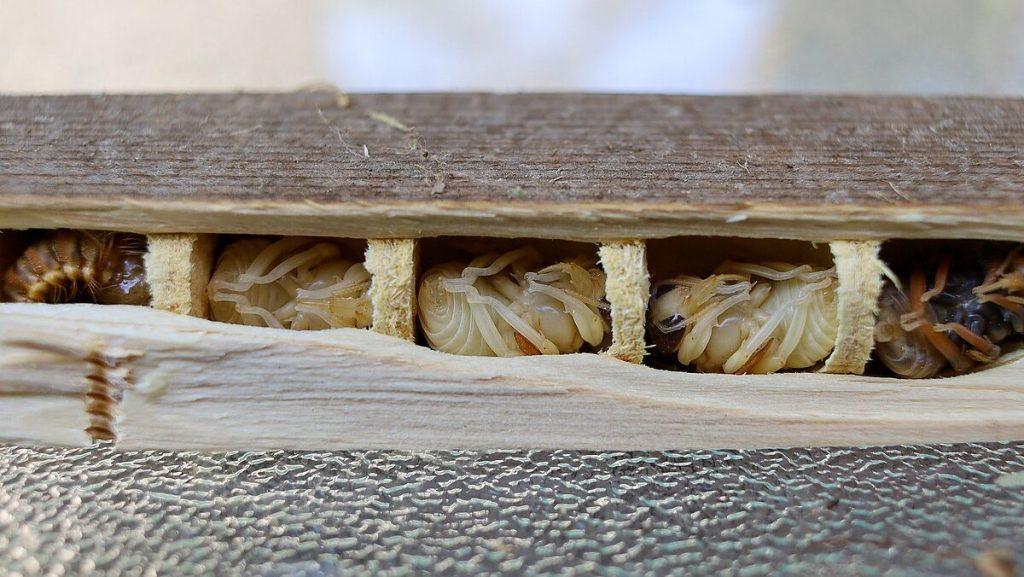
Nesting Habits: Carpenter Bee or Bumblebee?
Understanding their nesting preferences can help you identify which bee you’re dealing with.Nesting Habits of Carpenter Bees
-
 Nest Creation: Create nests by tunneling into soft, untreated wood.
Nest Creation: Create nests by tunneling into soft, untreated wood. -
 Signs of Infestation: Leave behind small, round holes (about 1/2 inch in diameter) and wood shavings.
Signs of Infestation: Leave behind small, round holes (about 1/2 inch in diameter) and wood shavings. -
 Preferred Areas: Prefer areas like decks, eaves, siding, or fences.
Preferred Areas: Prefer areas like decks, eaves, siding, or fences.
Nesting Habits of Bumble Bees
-
 Nest Location: Build nests underground or in abandoned animal burrows.
Nest Location: Build nests underground or in abandoned animal burrows. -
 Nest Composition: Their nests are made of wax and are small compared to honeybee hives.
Nest Composition: Their nests are made of wax and are small compared to honeybee hives. -
 Common Locations: Often found in grassy or wooded areas.
Common Locations: Often found in grassy or wooded areas.
Bumblebee vs Carpenter Bee: Which Should You Worry About?
| Feature | Carpenter Bees | Bumble Bees |
|---|---|---|
| Behavior | While not aggressive, they can cause significant structural damage over time by boring into wood. | Bumble bees are generally harmless and only sting when threatened. |
| Male Interaction | Male carpenter bees may hover around humans but cannot sting. | N/A |
| Female Stings | Females can sting but rarely do unless provoked. | They are crucial pollinators, helping flowers and crops thrive. |
| Impact on Property | Can cause damage to wooden structures by boring holes. | Their nests are temporary and usually harmless to property. |
How to Identify Bumble Bee or Carpenter Bee
Follow these steps to distinguish between bumble bees and carpenter bees based on their appearance, behavior, and nesting habits.Steps to Identify the Bee
Step 1: Observe Their Body
- Smooth and shiny? It’s a carpenter bee.
Fuzzy and striped? It’s a bumble bee.
Step 2: Look at Their Behavior
- Hovering around wood? Carpenter bee.
Flying around flowers? Bumble bee.
Step 3: Check for Nests
- Holes in wood? Carpenter bee nest.
Ground burrows? Bumble bee nest.
Tips for Identification
-
Keep a Safe Distance: Avoid disturbing the bees during observation to reduce the risk of stings.
-
Use Binoculars: If possible, use binoculars to observe their bodies and behaviors from a distance.
-
Seek Expert Advice: If unsure, consult a pest control professional for proper identification.
Note
Proper identification helps in preserving beneficial pollinators like bumble bees while addressing any potential structural concerns caused by carpenter bees.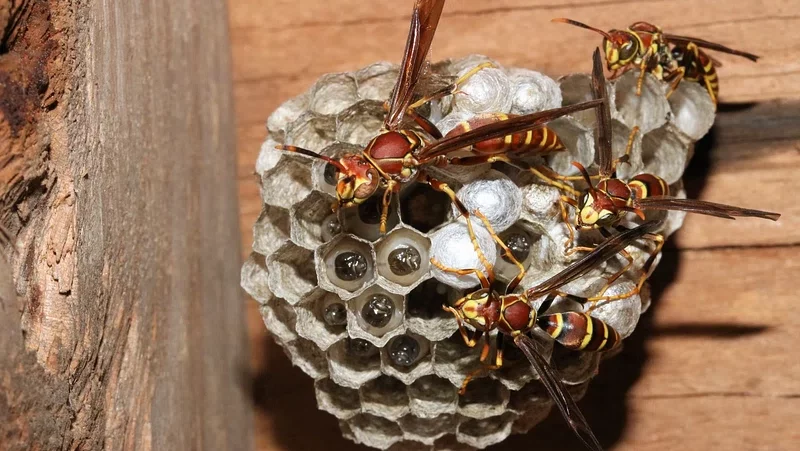
Prevention and Management Tips for Carpenter Bees
-
Seal Wood: Paint or treat exposed wooden surfaces to discourage carpenter bees from nesting.
-
Fill Holes: Use wood filler or caulk to seal existing holes and prevent bees from returning to the same spot.
Prevention and Management Tips for Bumble Bees
-
Avoid Disturbance: Since bumble bees are helpful pollinators, avoid harming or removing their nests unless absolutely necessary.
-
Relocate If Necessary: If their nest is in a high-traffic area, contact a professional to relocate the colony safely and ethically.





